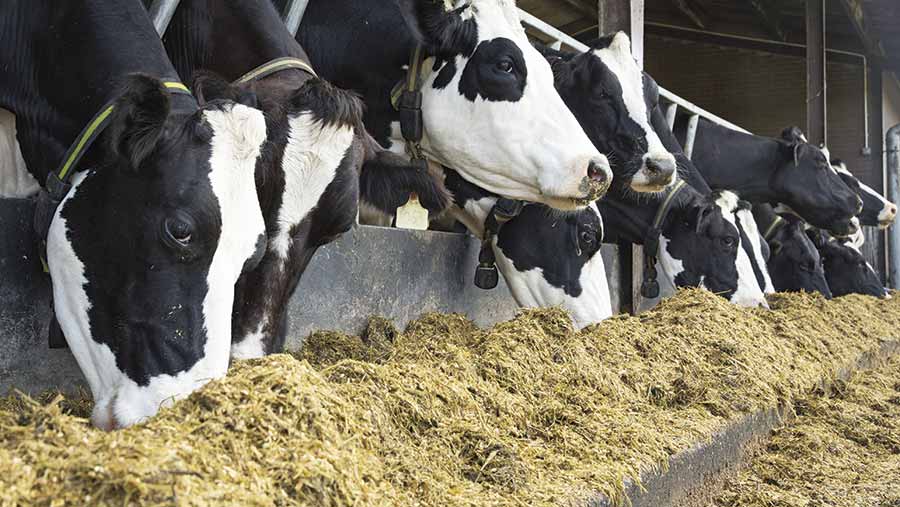Room to increase milk from forage as silage quality rises
 © Tim Scrivener
© Tim Scrivener Results from about 1,200 second-cut silage samples show that forage quality has lifted on last year.
Crude protein, metabolisable energy and dry matter are up on 2016 at 15%, 10.5ME and 33.3% respectively (see table below).
Dr Liz Homer from Trouw Nutrition said the results show that first-cut silage quality has been maintained, with both second and first cuts showing an identical picture of production potential.
See also: Farms told to capitalise on first-cut silage quality
“Both first and second cuts should be expected to support M+8 litres provided the rumen is well balanced,” she said.
“Provided diets are carefully formulated to balance silages and maintain good rumen health, then there’s a tremendous opportunity to increase milk production from forage and improve margins.”
Using current straights prices the 2016 diet would have cost £4.78 a cow a day (13.65ppl) to produce 35 litres, while the 2017 diet would cost £4.53 a cow a day (12.94ppl).
This equates to a saving of 15p a cow a day, worth £3,000/100 cows for a 200-day winter.
The results have been attributed to the good weather conditions and earlier harvests.
Advice for feeding
We are definitely seeing some of the best silage we have ever seen on farms where there’s been good attention to detail
Hefin Richards
Rumen health should not be a problem because fibre index is high and acid load is low, she added.
However, rumen fermentable protein is lower in the second cut at 66g/kg compared with 77g/kg last year, so more fermentable protein may be required in rations, said Dr Homer.
She suggested supplementing rations with rape, soya and distillers or even urea to make up the shortfall.
Independent nutritionist Hefin Richards of Profeed Nutrition believes the improvements in sugar content will afford farmers the opportunity to feed cheaper protein sources.
“We are definitely seeing some of the best silage we have ever seen on farms where there’s been good attention to detail,” he said.
However, he warned that quantity could be a concern.
“Yields have been a bit lighter throughout the early season and if you have palatable silage cows eat more. So, farmers need to ensure they have enough to keep going.”
He stressed this was the average picture across the UK and that forages would be variable from farm to farm. Therefore, he said, it was advisable to get forage analysed to see how it would feed.
Silage results compared
|
Second cut 2016 |
Second cut 2017 |
First cut 2017 |
|
|
Dry matter (%) |
30.7 |
33.3 |
33.2 |
|
Crude protein (%) |
14.2 |
15 |
14.8 |
|
ME (MJ/kg DM) |
10.3 |
10.5 |
10.9 |
|
NDF |
50.6 |
48.2 |
46.6 |
|
ph |
4.2 |
4.4 |
4.3 |
|
Acid load |
43 |
44 |
47 |
|
DyNE (MJ/kg) |
5.96 |
6.27 |
6.22 |
|
Fibre index |
205 |
196 |
188 |
|
(M+ litres) based on 10kg dm |
7.3 |
8.3 |
8 |
